Genetic variation within plant species has not only been richly documented in science but also widely exploited for horticultural use. Individual plants have often been selected from wild populations for their deviations in growth habit, flower size, and leaf color, but another primary driver of plant exploration has been the promise of winter hardiness due to provenance. In many cases, this, too, is under the auspices of science, for it allows botanical gardens and arboreta to cultivate species that may normally be out of reach due to lack of hardiness. We present here a prime example of such work: the quest by the Arnold Arboretum to introduce into cultivation hardy stock of the cedar-of-Lebanon, Cedrus libani.
The genus Cedrus has a natural range that extends from North Africa around the Mediterranean Sea into Lebanon, Syria, Cyprus, and Turkey and west to the Himalayas (Farjon 1990). Depending on the treatment, there are a variable number of species of true cedar, and Farjon (2001) recognizes four. The beautiful long-needled deodar cedar (Cedrus deodora) occurs in a wide range of habitats in the Himalayas of Afghanistan, Pakistan, Kashmir, and Nepal. The atlas cedar (Cedrus atlantica) grows in the Atlas Mountains of Algeria and Morocco while the short-needled Cyprus cedar (Cedrus brevifolia) is restricted to that island; both of these taxa have by some botanists been considered separate subspecies of Cedrus libani, the cedar-of-Lebanon, which occurs naturally in Lebanon, Syria, and the Cilician Taurus mountains of southern Anatolia, or modern-day Turkey. It is this group of cedars from Turkey that most interests us and that is the focus of this article.
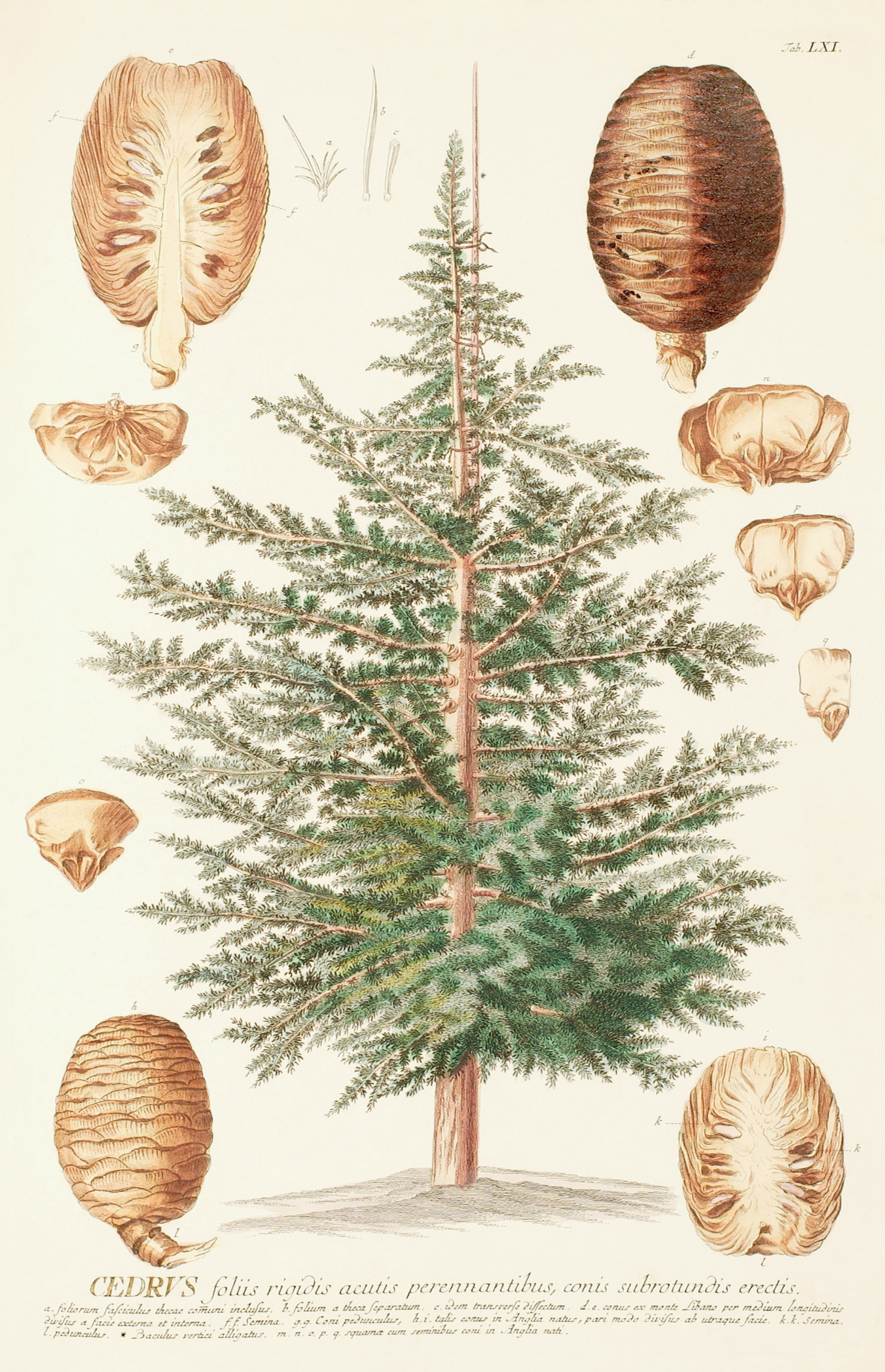
Authors have variously recognized the Turkish provenance of cedar with subspecific status (Farjon 1990). Cedrus libani subspecies stenocoma was first described by Schwarz (1944) and then Davis (1949), who both recognized that it was intermediate between the typical cedar-of-Lebanon and the atlas cedar. Volume One of The Flora of Turkey (Davis 1965) did not recognize subspecies stenocoma, although it is recognized as a variety in the eleventh volume of the same work (Guner 2000). More recently, the Turkish provenance was classified as Cedrus libani ssp. stenocoma (Farjon 2001) and these trees usually are called the hardy cedar-of-Lebanon. The Turkish trees are generally considered to be more upright and conical (not forming the flat “umbrella” top of other cedars) and to have shorter needles than those from Lebanon (Farjon 1990), although there is variability particularly in the former trait and is likely more a function of environment than pure genotype. The epithet stenocoma literally means “narrow hair,” referring to pubescent twigs of the Turkish plants.
Cedrus libani in Asia Minor
During the 1800s Cedrus libani was grown throughout Philadelphia and New York but was not hardy in Boston and New England (Wilson 1926). Josiah Hoopes, a nurseryman from West Chester, in southeastern Pennsylvania, wrote that “the cedar-of-Lebanon is found to be pretty hardy . . . [and] with us it has succeeded to our entire satisfaction, and we can therefor recommend it without reserve, if proper cultivation and a moderate amount of care be given to it.” In his 1868 book, Hoopes also mentions Pierre Belon, a French botanist and physician who traveled throughout the Levant in the 1540s. In 1553 Belon published De arboribus coniferis, probably the first text devoted entirely to conifers, and in it he included the first description of cedar-of-Lebanon growing in the Amanus (Nur) and Taurus Mountains of southern Anatolia. In 1597, John Gerard cited Belon in his Herbal, saying:
The cedar trees grow upon the snowie mountaines, as in Syria on mount Libanus, on which there remaine some euen to this day, saith Bellonius planted as it is thought by Salomon himselfe: they are likewise found on the mountains Taurus, and Amanus, in colde and stonie places.
Gerard’s statement reveals that as early as the sixteenth century authors took notice of these unique trees from Anatolia and recognized that this more northern provenance possessed greater potential for cold hardiness.
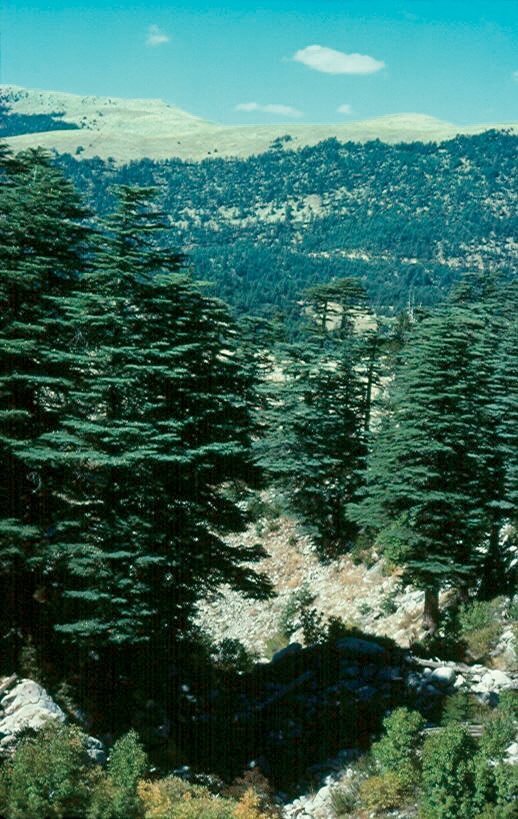
Nineteenth-century botanical and horticultural literature was replete with references to the northern populations of cedar-of-Lebanon. Several European botanists were exploring and describing the flora of Asia Minor and their works describe a growing understanding of the natural range of cedar in this region. Asie Mineure by P. A. Chikhachev is an extremely thorough account of the physical geography, climate, fauna, and flora of Asia Minor, based on his travels throughout the region. Among his extensive botanical listings is Cedrus libani, which he described as growing in numerous locations. Chikhachev describes their locations using the ancient names for the regions of Anatolia, moving from west to east: in Pisidia between Lakes Beysehir and Egridir; in Isauria at Mount Topyedik growing around 2,000 meters; in Cilicia growing on the northeast and southeast exposures of all the mountainous regions of the Bulgar Daglari (Bolkar Daglari mountains of the Taurus range), where it descends to 4,600 feet (1,400 m); growing in groves in the Antitaurus Mountains between the villages Sarkanty-oglu and Tchedeme [sic] at 5,600 feet (1,700 m) (Chikhachev 1860).
Just two years later, Joseph Hooker gave detailed location information on Cedrus libani in Asia Minor, clearly building on contemporary botanical work:
The nearest point to the Lebanon [Mountains] at which Cedars have been found, is the Bulgardagh chain of the Taurus in Asia Minor, and from that point forests extend eastward to Pisidia, in long. E. 32°, westward to long. E. 36°, and northward to the Anti-Taurus, in lat. 40° N.; growing at elevations of 4000 to 6400 feet above the sea. The Lebanon may be regarded as a branch of the Taurus, and is 250 miles distant from the Cedar forests upon that chain . . . Northern Syria and Asia Minor form one botanical province; so that the Lebanon grove, though so widely disconnected from the Taurus forests, can be regarded in no other light than as an outlying member of the latter.
Ravenscroft gave a colossal summary of all known accounts of cedar-of-Lebanon, with beautiful color plates, in his 1884 Pinetum Britannicum. He describes the species in amazing detail, including comparisons made to other Cedrus and descriptions of the Syrian and Lebanese trees. Particularly interesting is a table that accounts for all visits made by individuals from 1487 to 1864 to the sacred grove that lies on Mt. Lebanon. He also writes of the Anatolian population, providing a description practically identical to that of Hooker.
Yet another thorough description of the locations of the Anatolian cedars is given in Boissier’s 1884 Flora Orientalis, where he reported cedar-of-Lebanon growing in the mountainous and subalpine regions of southern Anatolia, in the mountains of the Lycian, Cilician and Anti-Taurus mountains. He wrote that the species grew extensively throughout forests with Abies cilicica and Juniperus foetidissima at 4,000 to 6,500 feet (1,200 to 2,000 m). Stapf noted in 1885 that in the southwestern corner of Turkey (Lycia) dense woods of cedar were observed in the Baba Dagh and between Zumuru and the Bulanik Dagh [sic].
How the Hardy Cedar-of-Lebanon Found Its Way to North America
A contemporary of the botanists writing and exploring Asia Minor in the late 1800s was Walter Siehe, an interesting and somewhat mysterious character who played an integral role in introducing the hardy cedar-of-Lebanon into the United States. Siehe was a German botanical explorer living in Smyrna (Izmar), Turkey. In his Die Nadelholzer des cilicischen Taurus (Conifers of the Cilician Taurus), he described the natural habitat of conifers growing in the mountains of southern Anatolia and the conifers themselves, including Abies cilicica, Taxus baccata, several species of Juniperus, Cupressus sempervirens, and of course Cedrus libani. Of the cedar he wrote, “the proud tree is a child of the high altitude,” growing in a severe climate where the snows lie a few meters deep for five months of the year (Siehe 1897b). In these mountains where the cedars grow on the steep walls and high saddles between peaks, Siehe romantically describes the roaring wild rivers, the whiteness of the snow, and the long silences broken only by the screech of birds or tumbling stones kicked loose by an escaping mountain goat. He notes that despite the usefulness of cedar’s wood, the large populations of cedar persisted because of the inaccessibility of the mountains. He describes trees up to 130 feet (40 m) tall and describes their column-like trunks supporting branches as regular as floors of a building (Siehe 1897a). It is clear from his travel accounts that Siehe knew the mountains of southern Turkey very well and was the right person, in the right place, and at the right time to send seed to North America.
It is in the context of nineteenth-century botanical exploration and description throughout Asia Minor that one understands Charles S. Sargent’s interest in the more northern population of cedar. Cedar-of-Lebanon—with its handsome and stately form, its association with grand estates throughout Europe and the mid-Atlantic United States, and its historic associations—is a highly desirable landscape tree.
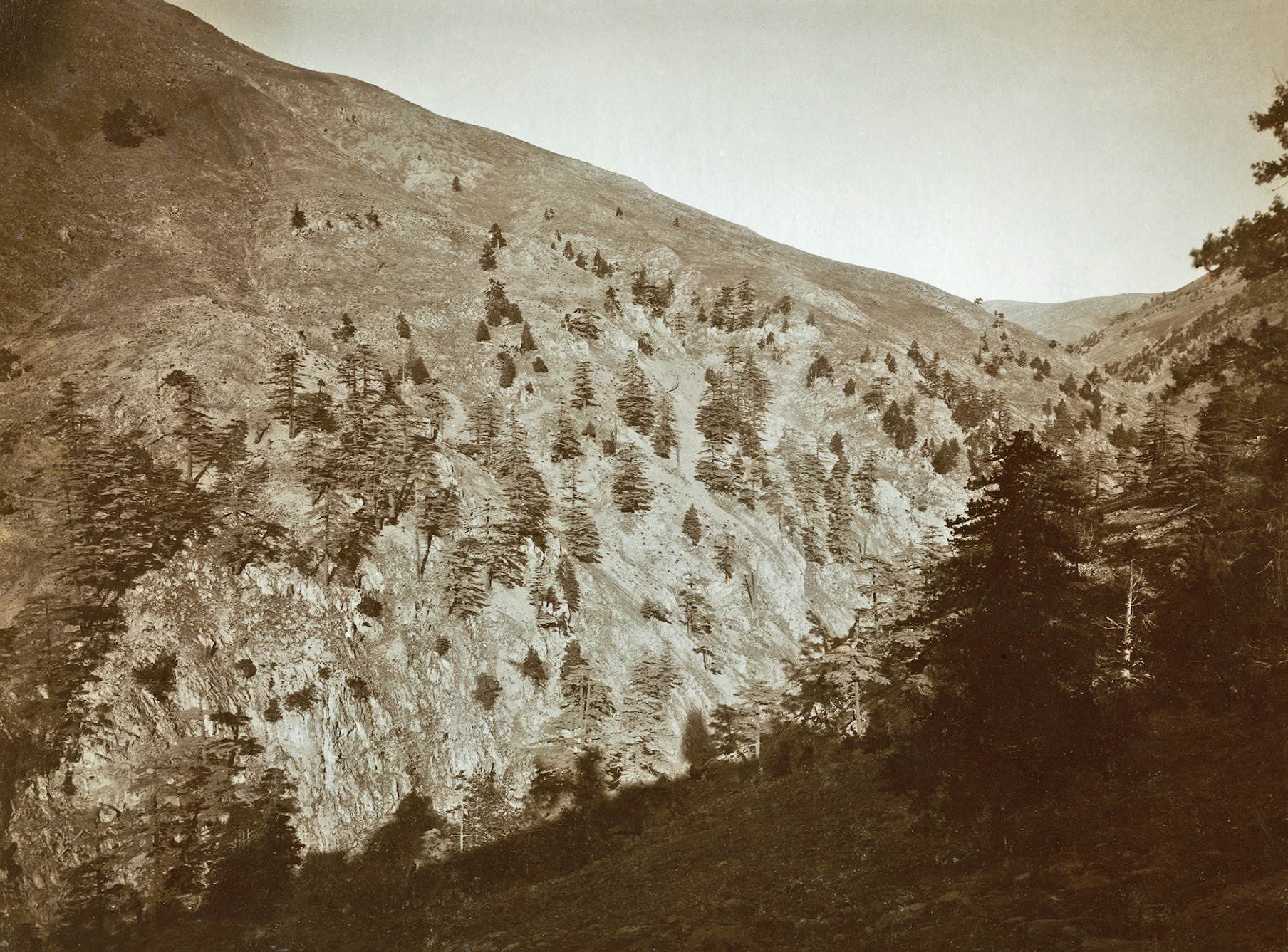
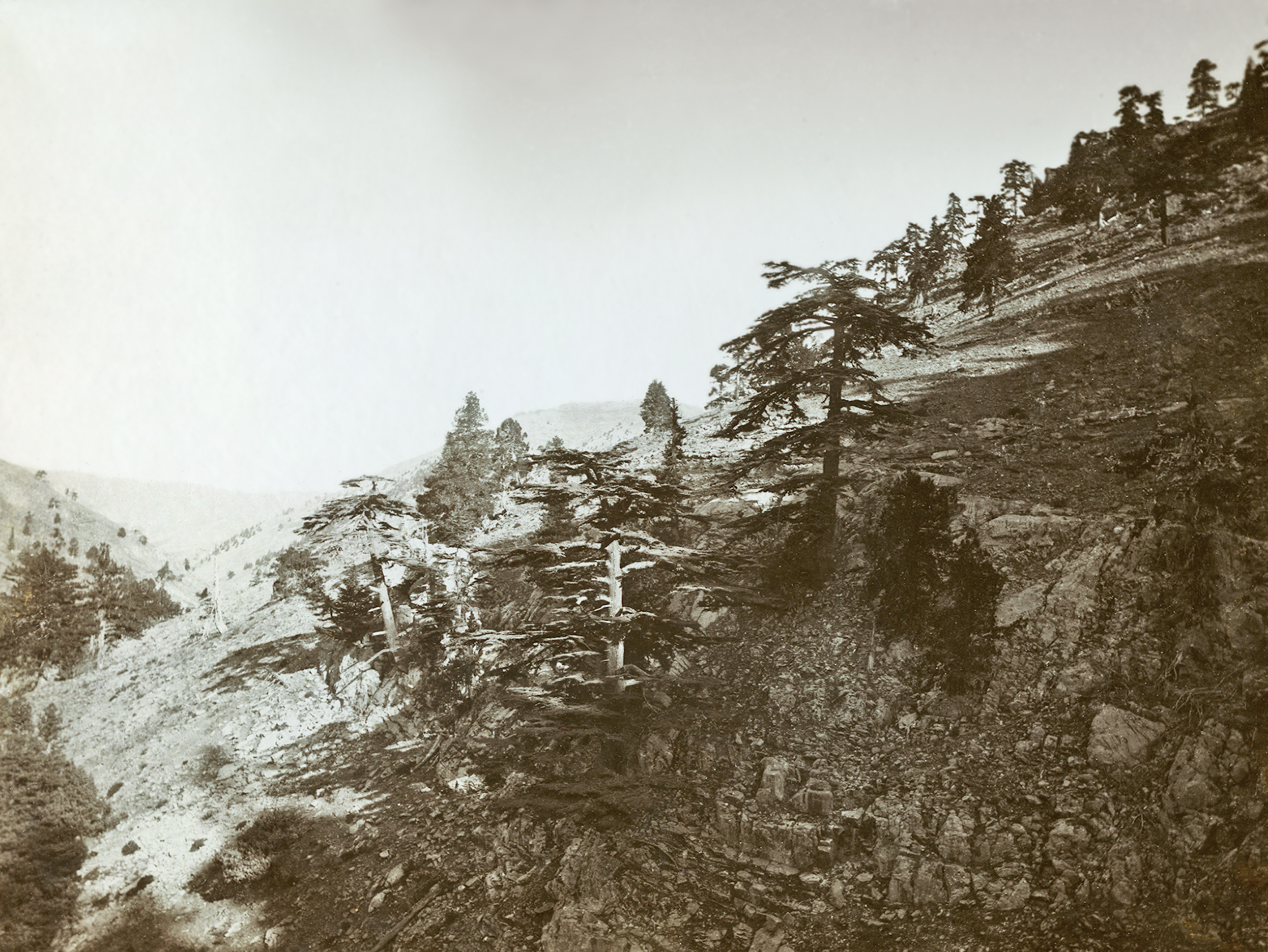
With this in mind, it’s easy to understand how Sargent, director of the Arnold Arboretum from 1873 until 1927, would have surely longed to grow cedars in New England. However, hardiness in New England was indeed an issue. He certainly would have read with great interest the accounts of the cedars and understood that trees from the Taurus mountains held the key to increased hardiness. With this in mind, Sargent hired Walter Siehe to collect seed from trees in the Taurus Mountains and have these sent to the Arnold Arboretum. In a letter from Siehe to Sargent, dated 18 November 1900, from Mersina, Turkey, Siehe wrote:
Dr. Bolle . . . has repeatedly informed me of your desire [to acquire] cedar cones from cold resistant trees of high altitude (1900 m [6,250 feet]). Only a few days ago did I manage to obtain, after several futile attempts, 50 kilos [110 pounds] of cones with good seeds. Since it was necessary to make a special trip, use many pack animals, and spend eight days of time for this, I am certain that you will not find the fee of 60 Mark German currency too high.
Apparently Sargent did not find the fee too high because the Arboretum’s plant records show that they received cones with ripe seeds from Siehe on February 4, 1902. The Arnold Arboretum was not the only recipient of Siehe’s seed: in 1908 H. J. Elwes and Augustine Henry wrote another excellent description of the cedars from the Taurus mountains and noted, “Siehe has sent seed from the Cilician Taurus to various places, and I have two vigorous young trees raised from them.”
Early reports from the Arnold Arboretum noted great success with this seedlot. The seeds had a high rate of germination and by 1915, Sargent reported in the Arboretum’s Bulletin of Popular of Information that the cedars-of-Lebanon had “all proved perfectly hardy, not one having suffered from drought or cold.” A plantation of trees was established on Bussey Hill, and other individual specimens were planted throughout the collection. The average height of these trees was about 13 feet (4 m), with the tallest having reached 21 feet (6.5 m), prompting Sargent to reflect, “It is doubtful if any other conifer can be grown in New England from seed to the height of twenty-one feet in thirteen years.” Wilson also seemed pleased with the rapid growth and hardiness of these trees, writing in 1919 that although the dreadful winter of 1917–1918 scorched the needles of the cedars, they recovered fully and “had grown more rapidly in the Arnold Arboretum than any other conifer has ever done.” And just five years later, the Bulletin reported that the trees had already reached 30 feet (9 m) in height. In 1926, twenty individuals of this accession (AA 4697*A-T) appear in the plant records, although over time there has been some attrition and currently only eight trees from Siehe’s original 1902 collection remain extant in the Arnold’s collection (AA #4697*A,C,G,I,K,M,O,P). Cold winters were not the cause for their decline, however; Donald Wyman wrote in 1946 that the cedars were thriving, growing for over forty years and withstanding temperatures of minus-20 degrees F. Strong winds were responsible for the loss of at least eight of the twelve trees, including five from the infamous 1938 hurricane alone.
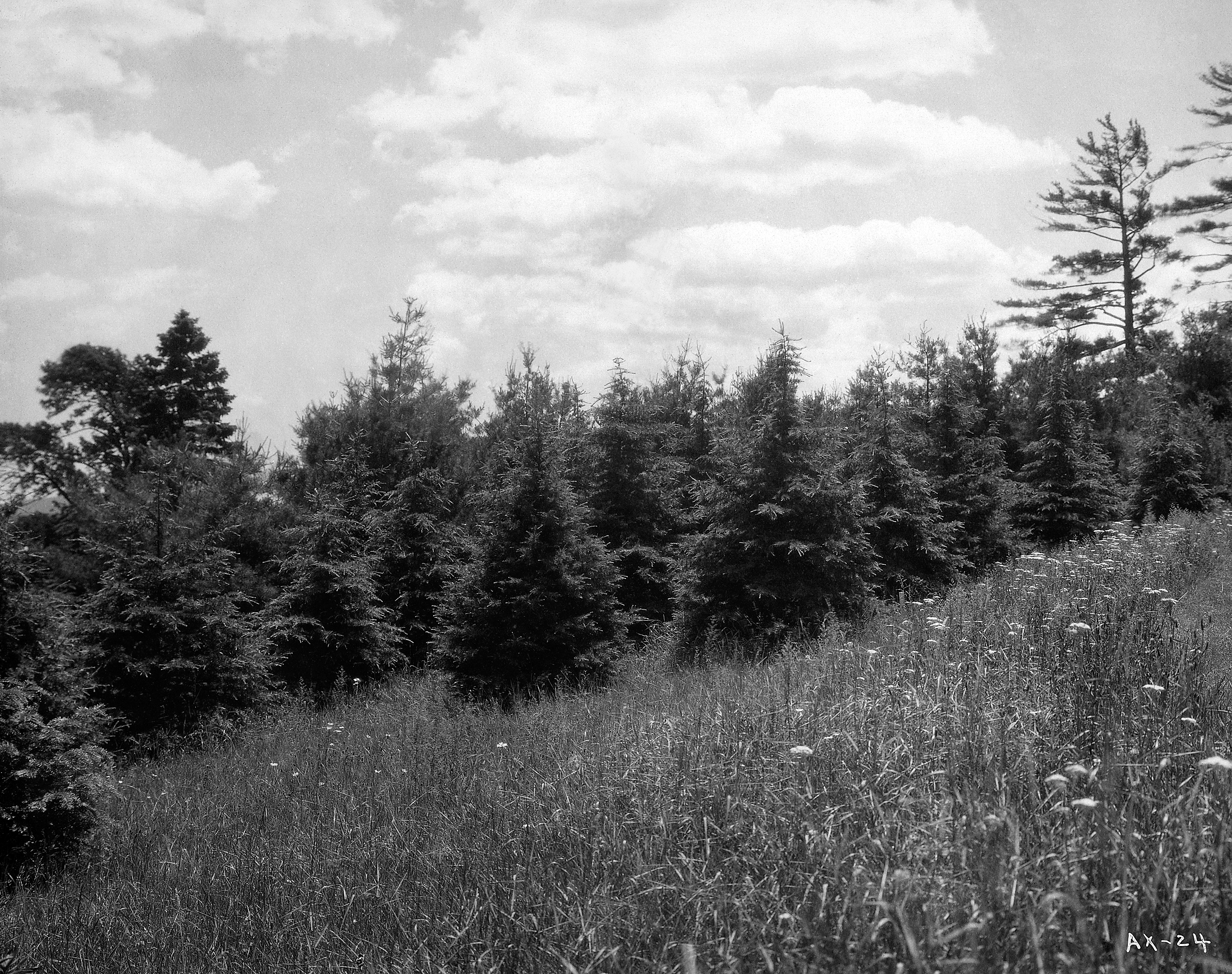
The Current State of Trees in the Wild
In Lebanon and Syria, the species is rare due to millennia of human impact (logging, burning, grazing). However, in Turkey, where the topography has prevented easy access, there remain extensive forests of Cedrus libani ssp. stenocoma. During a collecting expedition to the Taurus Mountains in 1990, Mark Flanagan (Keeper of the Royal Gardens, Windsor Great Park) encountered the hardy cedar-of-Lebanon running for nearly 620 miles (1,000 km) along the 5,900-foot (1800-m) contour line. Due to the high, open canopies in the overstory, the ground layer of these forests is very rich, including a diversity of taxa such as Acer hyrcanum, Sorbus umbellata, and Kitaibelia balansae. At present there are over 250,000 acres (100,000 ha) of cedar forest in Turkey, but this area is but a sixth of what used to occur in the Taurus Mountains (Boydak). With luck, though, these amazing stands will be appreciated for many more centuries due to recently established conservation efforts.
Other Notably Hardy Specimens
Among the Morris Arboretum’s extensive conifer collection are five mature specimens of hardy cedar-of-Lebanon. They are growing throughout the Arboretum, some tucked away, others in full view, and all of them handsome. The oldest tree was planted before the Arboretum’s founding in 1932 when the property was known as Compton, John and Lydia Morris’s estate. A cedar appears in this location in the 1909 Atlas of Compton—a survey of the Morris’ gardens and plants—and according to notes written by John Tonkin, the Morris’ gardener and Morris Arboretum’s superintendent from 1913 to 1961, this cedar came from the Arnold Arboretum. It is likely that this tree is a seedling from the original 1902 collection of Turkish seed, sent to the Morris’s from the Arnold Arboretum. Over the years, staff at the Morris Arboretum have marveled at the hardiness of this tree, recording that it showed no visible injuries during the devastatingly cold winters in the early 1930s (Lambert 1936). Although it has suffered storm damage during the past 25 years, today it shows a remarkable amount of young, vigorous re-growth for a tree of its age and size.
As students of Harrison Flint at Purdue University we often admired the selection ‘Purdue Hardy’ (Cedrus libani ssp. stenocoma ‘Purdue Hardy’), which grows in West Lafayette, Indiana, in a hardiness zone that routinely reaches minus-20 degrees F (USDA zone 5a). This 40- year-old specimen is remarkable for its graceful form and nearly pendant branches; like many others of the subspecies, it has not become flat-topped. It has certainly lived up to its name, withstanding winter temperatures of minus25 degrees F with only minimal browning of needles (Flint 1997).


The selection’s provenance is uncertain. It was one of several seedlings germinated from seed collected by the late Purdue professor Ted Shaw in the 1950s. Shaw had been in Lebanon working on reforestation projects supported by the United States when he obtained it. Oral history at Purdue has it that Shaw found the seeds “up in the Hills,” which could mean Lebanon or it could have been Turkey, where he vacationed. Since no Lebanese cedar has been successfully grown out-of-doors north of zone 6, it is far more likely to have originated in the mountains of Turkey.
Another noteworthy specimen, a mammoth cedar-of-Lebanon that is a Pennsylvania state champion, is at the Tyler Arboretum, in Media, Pennsylvania. Jacob and Minshall Painter, horticulturists and owners of the property that became the Tyler Arboretum, recorded purchases of cedars of Lebanon from the Philadelphia nurseries of John Evans, Josiah Hoopes, and Morris in the 1850s (Appleby 1992). It is one of the most remarkable conifers in the Delaware Valley: it stands 87 feet high (26.5 m) with a spread of 93 feet (28.4 m) and a diameter at breast height of 69 inches (175 cm).
The story of the majestic hardy cedar-of-Lebanon mixes history, geography, plant ecology, horticulture, and a love of conifers. When you next visit the Arnold, Morris, or Tyler Arboreta, take time to enjoy their magnificence and muse on their long journey from the mountains of Turkey to the eastern United States.
References
Appleby, M. E. 1992. The Tyler Arboretum: A Legacy of Botanical Riches. Tyler Arboretum, Media, PA.
Arnold Arboretum. 1915. Bulletin of Popular Information 1 (17): 66.
— — —. 1924. Bulletin of Popular Information 10 (1): 4.
Belon, P. 1553. P. Bellonii Cenomani De arboribus coniferis. G. Cavellat, Paris. Boissier, E. 1884. Flora Orientalis, vol. 5. H. Georg, Geneva and Basil.
Boydak, M. 2003. Regeneration of Lebanon cedar (Cedrus libani A. Rich.) on karstic lands in Turkey. Forest Ecology and Management 178: 231–243
Chikhachev, P. A. 1860. Asie Mineure; description physique de cette contrée, pt 3: Botanique, vol. II. Gide, Paris.
Davis, P. H. 1949. A journey in South-West Anatolia, pt I. Journal of the Royal Horticultural Society 74: 104–115.
— — —, J. Cullen, and M. J. E. Coode, eds. 1965. Flora of Turkey and the East Aegean Islands, vol. 1. Edinburgh University Press, Edinburgh.
Elwes, H. J., and A. Henry. 1908. The Trees of Great Britain and Ireland, vol. III. Edinburgh. Farjon, A. 1990. Pinaceae. Koeltz Scientific Books, Konigstein, Germany.
— — —. 2001. World Checklist and Bibliography of Conifers, 2nd ed. The Royal Botanic Gardens, Kew, London.
Flint, H. L. 1997. Landscape Plants for Eastern North America, 2nd ed. John Wiley and Sons, New York.
Gerard, J. 1597. The Herball, or, Generall historie of plantes. John Norton, London.
Guner, A., N. Ozhatay, T. Ekim, K. H. C. Baser, eds. 2000. Flora of Turkey and the East Aegean Islands, vol. 11 (supplement 2). Edinburgh University Press, Edinburgh.
Hooker, J. D. 1862. On the cedar-of-Lebanon, Taurus, Algeria, and India. Natural History Review II: 11–18.
Hoopes, J. 1868. The book of evergreens. A practical treatise on the Coniferæ, or cone-bearing plants. Orange Judd & Company, New York.
Lambert, J. 1936. Winter injury to conifers at the Morris Arboretum. Morris Arboretum Bulletin 1 (3): 27–30.
Ravenscroft, E. 1884. The pinetum britannicum: a descriptive account of hardy coniferous trees cultivated in Great Britain, vol. 3. W. Blackwood & Sons, London.
Schwarz, O. 1944. Anatolica I. Feddes Repert. Spec. Nov. Regni Veg. 54 (1): 26–34.
Siehe, W. 1897a. Die Nadalhölzer des cilicischen Taurus. Gartenflora 46 (7): 179–182.
— — —. 1897b. Die Nadalhölzer des cilicischen Taurus. Gartenflora 46 (8): 205–211.
Citation: Aiello, A.S., and Dosmann, M.S. The Quest for the Hardy Cedar-of-Lebanon. Arnoldia, 65(1): 26–35.
Stapf, O. 1885. Beitrage zur Flora von Lycien, Carien, und Mesopotamien, pt I. Karl Gerold’s Sohn, Wien.
Trew, C. J. 1750–1773. Plantae Selectae [Nuremberg], Plate 61, Cedrus.
Wilson, E. H. 1919. The Cedar-of-Lebanon. The Garden Magazine XXX (5): 178–183.
— — —. 1926. Aristocrats of the Garden. The Stratford Company, Boston, pp. 125–126.
Wyman, D. 1946. The Garden Club of America Tours the Arnold Arboretum, May 15, 1946. Arnoldia 6(3): 9–12.
Anthony S. Aiello is The Gayle E. Maloney Director of Horticulture and Curator at the Morris Arboretum of the University of Pennsylvania. Michael S. Dosmann is Curator of Living Collections at the Arnold Arboretum. They thank Elinor Goff of the Morris Arboretum, Charlotte Tancin of the Hunt Institute of Botanical Documentation, Britt Gardhner, and Nicole Schrader for their German translations, and Carol David, formerly of the Arnold Arboretum Horticultural Library.
